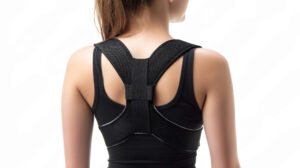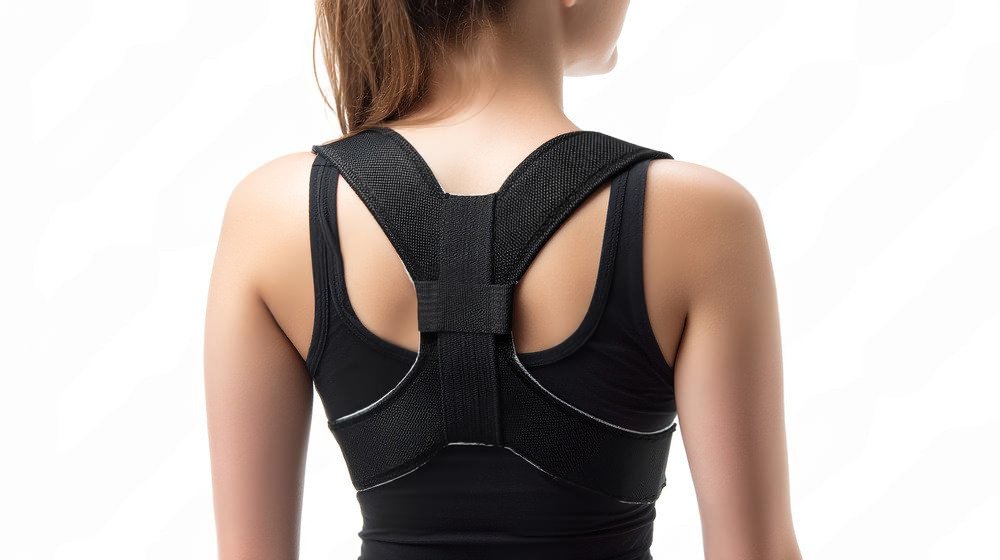Have you ever caught yourself slumped over your desk or straining to sit up straight? If so, you’re not alone. Many people struggle with maintaining good posture, especially in today’s technology-driven world. While it might seem like a minor issue, poor posture can lead to a host of problems, including back pain, neck strain, and even decreased confidence. Fortunately, posture correctors can be a game-changer when it comes to finding and maintaining that perfect alignment.

Table of Contents
ToggleWhat is a Posture Corrector?
A posture corrector is a device designed to help you maintain the proper alignment of your spine and shoulders. These products serve as physical reminders to keep your body in a healthy posture, making it easier for you to adjust your position throughout the day. There are various types of posture correctors available, ranging from braces that you wear under your clothing to straps that help you pull your shoulders back.
Why You Should Consider a Posture Corrector
If you’re wondering whether you really need a posture corrector, consider the following benefits:
- Pain Relief: Many individuals find that using a posture corrector alleviates pain in their backs and necks, which can be common issues linked to poor posture.
- Increased Awareness: Wearing a corrector can increase your awareness of your body and its alignment, helping you understand what good posture feels like.
- Enhanced Confidence: Standing tall and maintaining good posture can positively affect how you present yourself, boosting your self-esteem.
- Support for Physical Activities: Whether you’re exercising or simply going about your day, a posture corrector can provide extra support and stability.
Types of Posture Correctors
Different types of posture correctors cater to various needs and situations. It’s essential to choose one that feels comfortable and is easy for you to use.
1. Posture Braces
Posture braces are typically made of sturdy materials that provide structural support. They wrap around your shoulders and back, pulling your shoulder blades together to promote better alignment.
| Pros | Cons |
|---|---|
| Provides strong support | May feel restrictive |
| Ideal for long-term wear | Can be noticeable under clothing |
| Great for severe postural issues | Requires adjustment for comfort |
2. Posture Trainers
These are usually less rigid than braces and are designed to gently remind you to maintain good posture. They often include a feedback system, like vibration or alerts, to notify you when you’re slouching.
| Pros | Cons |
|---|---|
| Comfortable for daily wear | May require a learning curve |
| Provides feedback for improved posture | Battery life may vary |
| Can be worn under clothing | Might not be sufficient for severe issues |
3. Posture Devices
Utilizing smart technology, these devices often track your posture over time, offering insights and recommendations. They can be standalone devices or apps linked to a wearable item.
| Pros | Cons |
|---|---|
| Offers valuable feedback and analysis | Can be expensive |
| Helps track long-term progress | Requires smartphone or device compatibility |
| Encourages proactive posture habits | May drain battery quickly |
4. Foam Rollers and Massage Balls
While not traditional posture correctors, foam rollers and massage balls can help improve posture by relieving tension in your muscles. When your muscles are relaxed, it’s easier to maintain good posture.
| Pros | Cons |
|---|---|
| Affordable and versatile | Requires manual effort |
| Can easily fit into your routine | May not directly correct posture |
| Helps with muscle recovery | May not be suitable for all regions |
5. Supportive Cushions
Posture-correcting cushions can be placed on your chair, providing additional support to promote correct lumbar alignment. They encourage a more natural seat height and positioning.
| Pros | Cons |
|---|---|
| Easy to use in any chair | May require adjustment |
| Affordable | Durability depends on materials |
| Portable for travel | May not fit all chair types |
Key Features to Look for in a Posture Corrector
When you’re on the hunt for the best posture corrector for you, there are a few features to keep in mind to enhance comfort and effectiveness.
Comfort and Fit
Selecting a posture corrector that fits well is crucial. It shouldn’t feel too tight or painful when worn, as you may need it for extended periods. Look for adjustable straps that allow you to customize the fit based on your body size.
Material Quality
The material quality impacts how breathable and comfortable the corrector is. Fabric that allows for airflow can help reduce sweating and discomfort, particularly if you plan on wearing it all day long.
Ease of Use
Consider how easy it is to put on and take off the corrector. Some designs may require assistance, while others can be slipped on quickly. You want something that integrates effortlessly into your daily routine.
Flexibility and Support
A good posture corrector should provide adequate support while allowing for natural movement. Rigid supports may restrict movement better but could discomfort you during long wear.
Activity Level
If you’re planning to use the corrector during specific activities, such as exercising or working at a desk, choose a model that aligns with those needs. Some posture correctors are specifically designed for active use, while others are perfect for long sitting periods.
How to Use a Posture Corrector Effectively
Simply wearing a posture corrector won’t automatically fix your posture. To get the most benefit, follow these tips.
Gradual Introduction
Start by wearing your posture corrector for short periods. This allows your body to adjust to the new alignment. Gradually increase the time as you become more comfortable.
Pair with Exercises
Incorporating stretching and strengthening exercises can be beneficial to further enhance your posture. Strengthening your core and back muscles makes it easier to maintain proper alignment without relying solely on the corrector.
Regular Adjustment
If your posture corrector has adjustable straps, make sure to adjust them throughout the day to maintain comfort. Tightening or loosening as necessary can help you find the sweet spot where it offers support without causing discomfort.
Listen to Your Body
Pay attention to how your body responds to the corrector. If you experience pain or discomfort, take a break and reassess if you need to make any adjustments or even consider a different style.

This image is property of images.unsplash.com.
The Best Posture Correctors on the Market
Here’s a look at some of the top-rated posture correctors that may be just what you need!
1. PostureMedic Elite
Description: This posture brace is designed for both pain relief and prevention, targeting the shoulder and back areas effectively.
- Pros: Comfortable, adjustable, comes in multiple sizes.
- Cons: May not fit under all clothing styles.
2. Upright Go 2
Description: A smart wearable device that attaches to your back and alerts you when you slouch, helping you engage your core and correct your posture.
- Pros: Tracks progress via an app, discreet, customizable settings.
- Cons: Requires charging and may be pricey for some.
3. ComfyBrace Posture Corrector
Description: This is an affordable, adjustable brace that offers significant support without feeling overly restrictive.
- Pros: Budget-friendly, lightweight, easy to wear under clothing.
- Cons: May not provide enough support for severe cases.
4. Lumo Run
Description: This device combines a motion sensor and coaching feedback for runners, helping them maintain good posture while working out.
- Pros: Tracks data, offers coaching insights, useful for fitness enthusiasts.
- Cons: Focused mainly on running posture.
5. 5 Stars United Posture Corrector
Description: This posture corrector features adjustable straps for a customizable fit and is designed for all-day wear.
- Pros: Affordable, easy to use, effective for various body types.
- Cons: May require adjustments throughout the day.
Tips for Maintaining Good Posture
Using a posture corrector is just one piece of the puzzle. Habits contribute significantly to your overall posture improvement.
Awareness is Key
Throughout your day, remind yourself to check in on your posture. Whether you’re sitting, standing, or walking, maintain the idea of aligning your ears, shoulders, and hips.
Ergonomic Workstation
Ensure that your workstation is ergonomically set up. Your chair, desk, and computer monitor should align in a way that promotes good posture and minimizes strain. A chair with lumbar support helps maintain your spine’s natural curve.
Take Regular Breaks
If you’re sitting for extended periods, make it a habit to get up and stretch every 30 to 60 minutes. Movement is beneficial and can relieve any tension that builds up when you stay in one position for too long.
Strengthening Exercises
Focus on exercises that target your core and back muscles. Some effective options include:
- Back extensions
- Planks
- Shoulder blade squeezes
This will help reinforce good posture over time and build the necessary muscle strength to maintain it comfortably.
Yoga and Stretching
Incorporating yoga can increase your body awareness and promote alignment while also improving flexibility. Regular stretching can help alleviate tension from your muscles and is a great addition to your posture improvement plan.

This image is property of images.unsplash.com.
Conclusion
Finding the best posture corrector is just the first step in your journey toward better posture. Whether you’re dealing with discomfort, striving for confidence, or looking to enhance your physical activities, using a posture corrector alongside developing good habits can drastically improve your quality of life. By being proactive and taking small measures, you can achieve the posture you desire.
Implement some of these tips and explore the various options on the market on your way to better posture your body will thank you for!





One thought on “Discover the Best Posture Corrector”